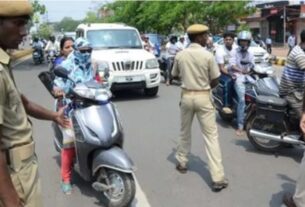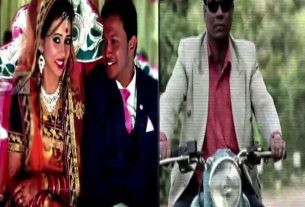By Anil Dhir
A piece of Odisha’s history lies in forgotten ignominy in the remote village of Ngota in the Province of Yogyakarta in Central Indonesia. Few know about it, none from Odisha may have visited it, but this memorial signifies a vital contribution that Biju Babu had in the independence of Indonesia.
On 17th August 1945, Sukarno proclaimed himself President of independent Indonesia. The country had been a Dutch Colony for nearly three hundred years and was under three years of Japanese occupation. The British Army had freed it from Japanese occupation, and wanted a say in its affairs. The new country needed an army, and a force known as the “People’s Security People’s Safety Body” was formed. On the 5th of October, 1945 the government formed a national military, including provision for an air force.
The Allied, the Dutch and the British forces had already landed on the main island of Java but were mainly concerned with the repatriation of former prisoners of war; however, it was known that the Dutch would soon attempt to retake the former colony. After the 2nd World War, Jawaharlal Nehru was taking a keen interest in the freedom struggles in South East Asia. The Independence movement in Indonesia under Sukarno was given a lot of open and tacit support by India, and Nehru was eager to establish Indian supremacy in the region.
In 1946, Biju Patnaik was asked by Nehru to help the Indonesian freedom fighters and their cause by ferrying planeloads of medicines and humanitarian assistance. (It is believed that arms and ammunition too were sent.) Biju’s Kalinga Airlineshad a dozen Dakota planes, and he, along with his pilots, flew numerous sorties, evading the Dutch who had put up land and sea blockades. It was during this time that Biju Patnaik developed a close friendship with Sukarno, who later became the first President of Indonesia. Many a time, his wife Gyan too accompanied him on these covert missions.
The Planes would fly from Kolkata with fuel stops at Mohanbari and Singapore. It was during one such operation that he rescued Muhammad Hatta, the then Vice President, and the Premier Sutan Sjahrir and brought them to India. The flights continued till 1949.In the course of these supplies, there were four fatal crashes.
In July 1947 the Dutch forces captured most major cities in Java and Sumatra, leaving the Indonesian republic on the defensive. The Red Cross of Malaya donated medical supplies to for the encircled nationalists, and the top Air Force officers of Indonesia, Agustinus Adisucipto and Abdul Rahman Saleh asked Biju Patnaik to transport the materials from Singapore.
His Kalinga Airlines Douglas C-47B-20-Dakota bearing Call Number VT-CLA left Singapore on the 29th July 1947 at 1:00 A.M. West Indonesian Time, after obtaining necessary approvals by both the British and Dutch forces. The night before the flight, the Malayan radio broadcasted that the flight with its registration number would be on a mercy mission. Permission to land at Maguwa airfield in Yugyakarta was given and a safe passage was assured.
The flight was piloted by Alexander Noel Constantine a former officer of the Royal Australian Air Force, and carried nearly three tons of cargo. Along with him were Co-pilot Roy Hazlehurst, technician Zainal Arifin and airman Bidha Ram. Two Indonesian officers were also on board, along with the Captain’s wife. After a three hour flight, the Pilot made the approach run to the Maguwa airfield and extended the undercarriage for landing. Just then, two Dutch Kittyhawks appeared and shot at the aircraft. The bullets destroyed the left engine and the aircraft went into a dive and crashed into the paddy fields three kilometers from the airfield. The tail section broke up on impact and the rest of the plane was totally wrecked.
Of the nine passengers and crew, seven died on the spot. Two others, the pilot’s wife Beryl and Abdulgani Handonotjokro, were rushed to the Bethesda Hospital in the city. Beryl Constantine succumbed to her wounds at the hospital, while Handonotjokro survived. After a small memorial service at Tugu Hotel, which had been used as a temporary barracks for the air force, Adisucipto and Saleh were buried at Kuncen Cemetery in Yogyakarta.The Pilot and crew were buried at the British Cemetery. The tail portion of the plane was recovered and kept safely in a hangar of the airfield.
A livid Biju Patnaik contacted Nehru, who immediately took up the matter with the Dutch and British authorities. The Dutch initially denied that they were involved in the crash. However, Indonesian witnesses on the ground reported that the Kittyhawks had shot the Dakota. The Post mortem of the dead airmen confirmed that they had been shot, as they had bullets in their bodies.
The Dutch then denied knowledge of the mercy flight and cited that they were no Red Cross markings on the plane. However in the end they had to admit their fault and it was revealed that the shooting down was in retaliation of bombings by two zealous Indonesian Air Force cadets at the Dutch positions at Semarang, Salatiga and Ambarawa that same morning. Nehru’s strong protests made the Dutch give India an old Dakota and financial compensation.
On 1 March 1948, a monument to the crash was built in Ngoto. The shooting down of the Dakota was a turning point in the freedom struggle. Adisucipto and Saleh were declared National Heroes of Indonesia in 1974. Since 1979, the Indonesian Air Force celebrates the crash day as Service Day, (incidentally called Hari Bhakti in Bahasa, the Indonesian language) in commemoration of the crash and remembrance of all those who died.
I have repeatedly written to the Chief Minister about the monument and the legacy of Biju babu’scontribution in Indonesia’s independence, and asked him to send a representative to Ngoto on the Memorial Day
DISCLAIMER: The views expressed in the article are solely those of the author Anil Dhir, a historian and researcher and do not in any way represent the views of Odisha News Tune.



